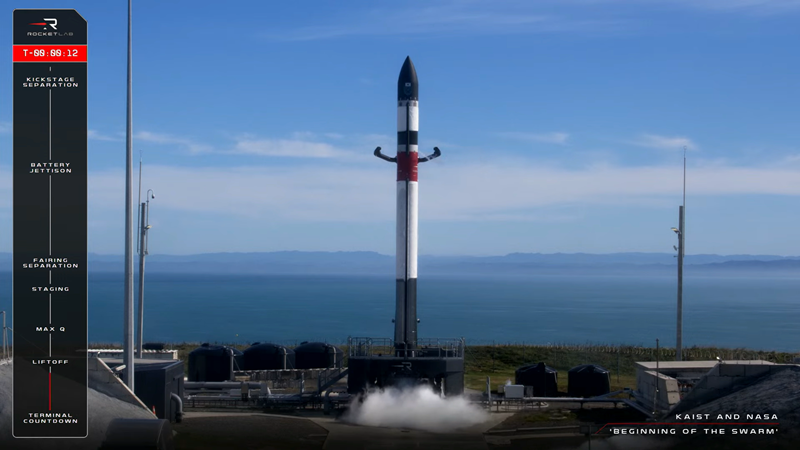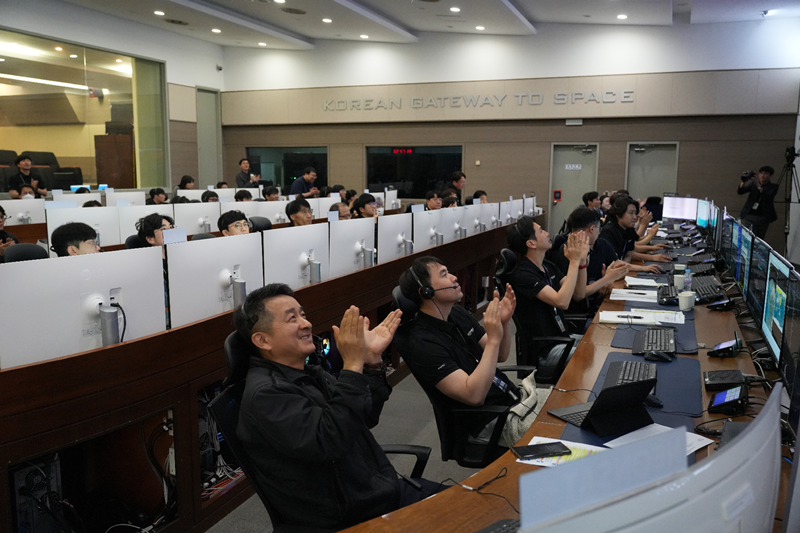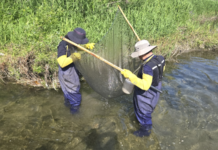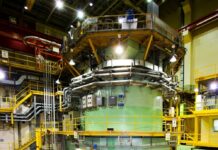
The Ministry of Science and ICT on April 24 announced that the nation’s first homegrown nanosatellite, New-space Earth Observation Satellite Constellation No. 1 (NEONSAT-1), entered normal orbit. Shown is NEONSAT-1 before launch.By Wu Jinhua
Photos = Ministry of Science and ICT
The Ministry of Science and ICT on April 24 said the nation’s first domestically developed nanosatellite launched that day entered normal orbit and communicated with a ground station.
The ministry announced that New-space Earth Observation Satellite Constellation No. 1 (NEONSAT-1) established two-way communication with the ground station in Daejeon of the Korean Aerospace Research Institute with normal functions. A rocket with the device had blasted off at 7:32 a.m. that day from a spaceport in Mahia, New Zealand.
The Korea Advanced Institute of Science and Technology (KAIST) will test the performance of the satellite and optical payload for a month and gauge the quality of observation images for five months. Once these inspections are done, NEONSAT-1 is expected to begin its mission to observe Earth from November.
Developed since 2020 by KAIST Satellite Technology Research Center with backing from the ministry and National Intelligence Service, this ultra-small satellite is designed for Earth observation. To achieve economical mass production, it incorporates the concepts of lightweight construction and low cost and power consumption and utilizes more readily available commercial components.
By 2027, the ministry plans to launch 10 more nanosatellites on the homegrown launch vehicle Nuri. Upon completion of all launches, 11 satellites will observe the Korean Peninsula at least three times a day to raise the capabilities of medium and large satellites monitoring the planet in groundbreaking fashion.
“The successful launch of the first nano-constellation satellite is thanks to the converged capacities of industry, academia and research bodies throughout the entire process of development, production and launch,” First Vice Minister of Science and ICT Lee Chang Yune said.
“We plan to seamlessly develop follow-up satellites in line with the era of private space development to further boost the competitiveness of Korean space technology and continue to develop the space industry.”

Staff at the ground station in Daejeon of the Korean Aerospace Research Institute on April 24 celebrate after NEONSAT-1 establishes two-way communication with the station after being launched into space.
jane0614@korea.kr























